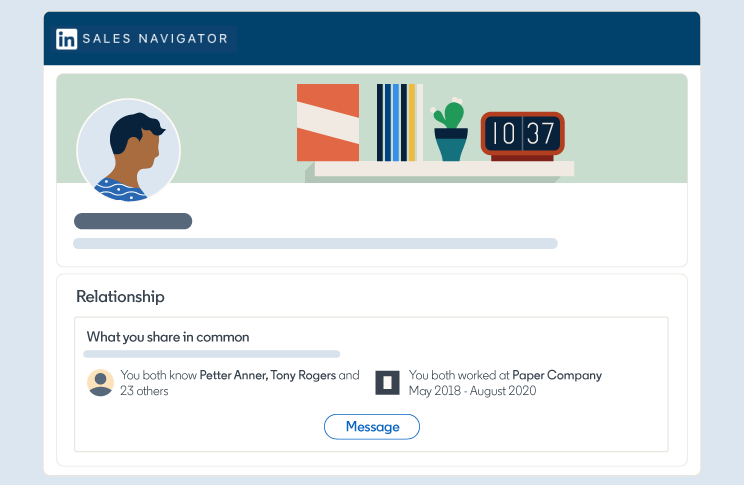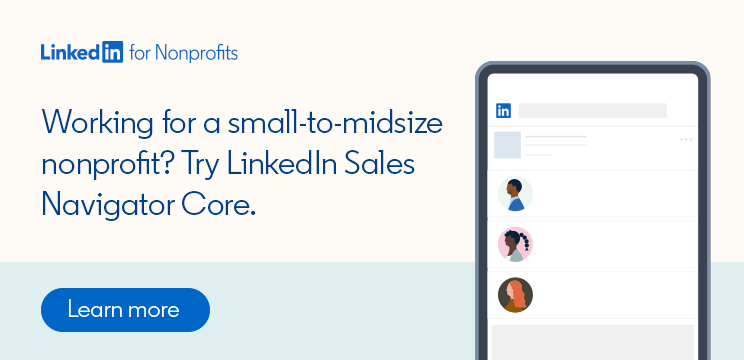
How to Fundraise as a Brand New Nonprofit
Understanding how to fundraise can feel like a challenging endeavor, especially as a nonprofit startup or a newer organization. It can be difficult to know where to begin. As you look to find donors and build your development strategy, there are two first steps you can take to position yourself for fundraising success:
Choose who are you going to ask for funding
Decide how you are going to ask them to donate to your nonprofit
As you begin planning how to fundraise, take the following steps to discover answers that can guide your nonprofit’s current (and future) fundraising efforts:
Who to ask for fundraising as a nonprofit
Finding the right donor audience is paramount, especially in the early stages of building awareness and financial support for your new nonprofit. LinkedIn has free and discounted tools that can help you narrow your search and connect with potential supporters.
Start by leveraging your existing connections
Have everyone in your organization review their existing connections and look for any organizations or individuals who might be interested in hearing more about what you’re doing and why. These could be like-minded people who have expressed interest in supporting causes like yours, people actively involved in advocating for other nonprofits, people in industries related to your own nonprofit, or even people you or your coworkers have supported in the past.
Start your fundraising process by reaching out to these connections with personalized messaging. When you talk to them, ask if they know of anyone else who might be interested in supporting your mission.
LinkedIn Sales Navigator can make this process much easier. It allows you to better understand your entire nonprofit’s network of connections, including the connections of everyone affiliated with the organization, so you can ask for a “warm” introduction when you share a mutual connection with someone you want to speak to.
Even if you don’t have a mutual connection, you can use Sales Navigator to quickly see if you have anything in common with a person, helping you get the conversation started when you reach out to them directly via a personalized InMail message on LinkedIn.

Create and target an Ideal Donor Profile
An Ideal Donor Profile (IDP) defines the demographics, background, interests, values, and any other pertinent details about those most likely to donate to your nonprofit. Try building at least one for both individual donors and corporate donors.
Fill out your IDP with as many identifying details as possible. Answer questions such as:
What demographics of people are most likely to support your nonprofit? What is their gender, age, education level, and geographic location?
Why are these people interested in supporting your organization? How does supporting you reflect their values or interests?
Where have these people worked?
What do these people do when they’re not at work? What kind of hobbies or extracurricular activities are they involved in?
Where do these people get their news? Which social media platforms do they frequent?
The more information you can add to your IDP the better, as it will help you target likely donors. Sales Navigator can help you both design and effectively utilize your IDP. Using LinkedIn profile data, Sales Navigator allows you to search for prospective donors via advanced filters unavailable anywhere else, such as current and past job title, job function, seniority level, LinkedIn Groups they’re members of, and even specific keywords appearing in articles they’ve posted.
When searching for major donors via Sales Navigator or the free search function on LinkedIn, look for promising elements of their LinkedIn profiles such as:
Relevant volunteer or board experience
Similar nonprofits listed under “interests”
Mentions of issues they care about in their “causes” section
Membership in LinkedIn Groups related to your cause
LinkedIn analytical tools like the LinkedIn Sales Navigator Application Platform can also help you continuously refine your IDP by allowing you to track what’s working and what isn’t.
How to ask for fundraising as a nonprofit startup
Once you’ve found a few prospective donors, you’ll want to decide how to approach them. These messaging considerations when you reach out will help you make a positive first impression and explain the purpose of your nonprofit in a way that resonates.
Focus on relationships first
No matter how ideal the potential donor is, asking them for money the first time you reach out isn’t likely to be very effective. Instead, try “warming up” your contacts over the course of two-to-three weeks and eight-to-10 touch points.
Start with a simple introduction. Explain who you are, how and why you found the person you’re reaching out to, and why you think they may be interested in what you have to say. This doesn't mean you need to write completely personalized outreach InMails to every would-be donor, of course. Start with a core message and tailor it to the recipient.
Focus on the aspirational and inspirational aspects of your organization in this message. Explain why you started your nonprofit, what you hope to accomplish, why this mission means so much to you, and how you’re going to achieve your goals.
Focus on impact and make your donor the star
In the past few years, nonprofits have been successful at fundraising when they focus on two key elements of messaging: transparency and impact.
When asking for money, be as transparent as possible about what your donor’s contribution will accomplish. If you can, show examples of the impact you’ve created. Share qualities of your nonprofit that make it uniquely equipped for its mission and worth supporting.
Donors want to know that their money will be well used. Even more than that, they want to feel like they’re making a difference. That’s why people donate to nonprofits in the first place!
Your success as a fundraiser will depend in no small part on how successfully you make your donors feel like they’re doing something they can be proud of. Show them exactly how true that is right from the ask.
For more tips on fundraising and many more of the pressing concerns of new nonprofits like yours, keep up with the LinkedIn for Nonprofits blog. To get the tools you need to fundraise on LinkedIn as effectively as possible, check out our many discounted products for nonprofits.

